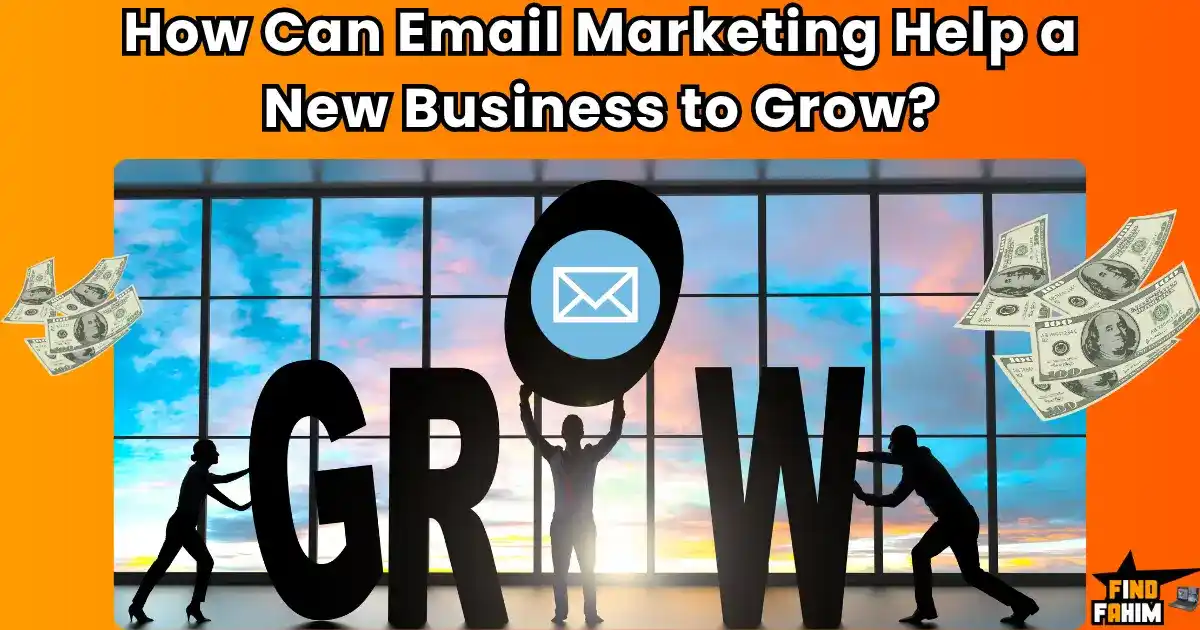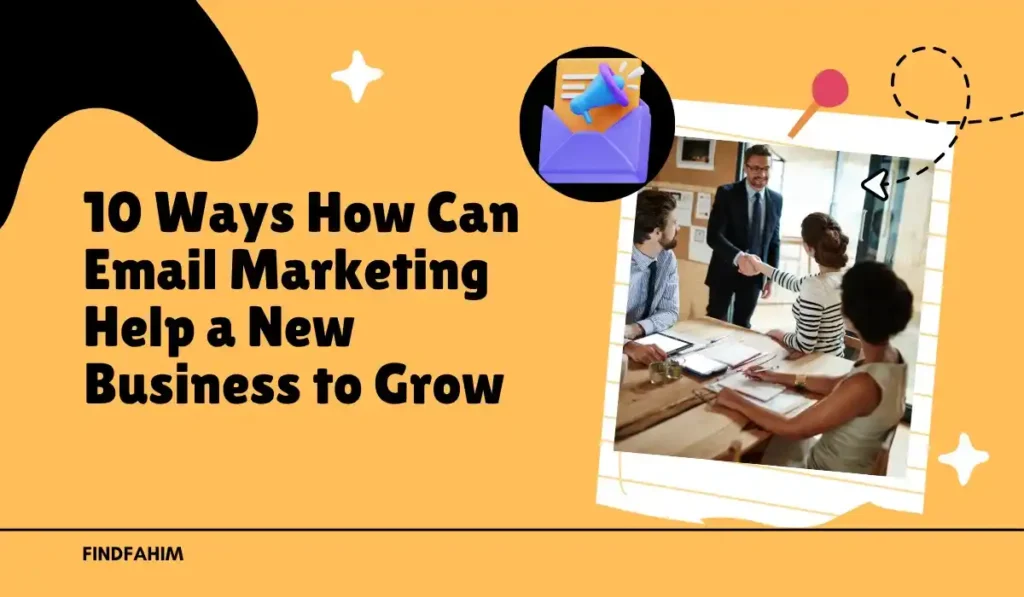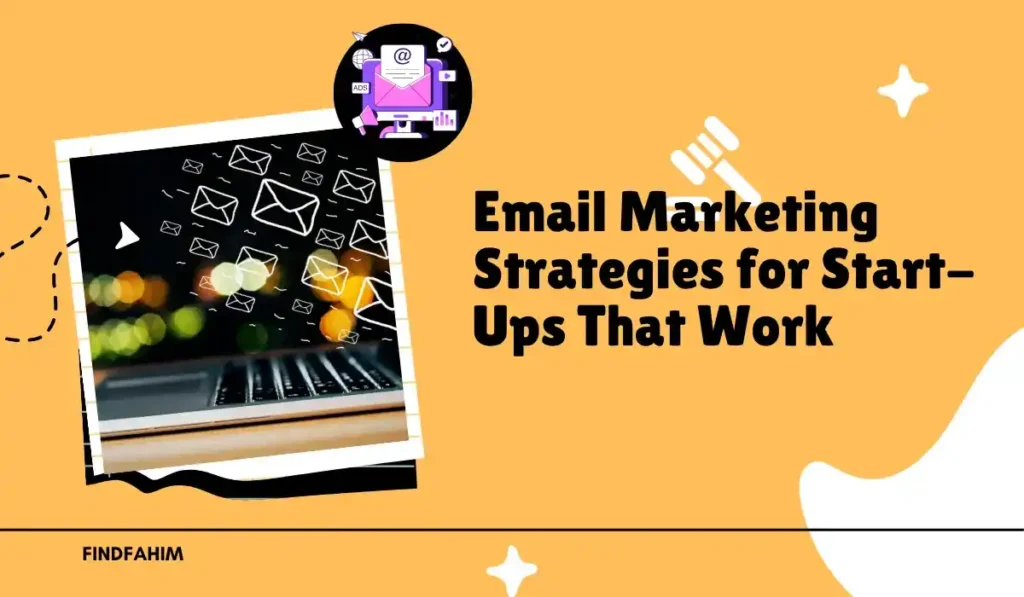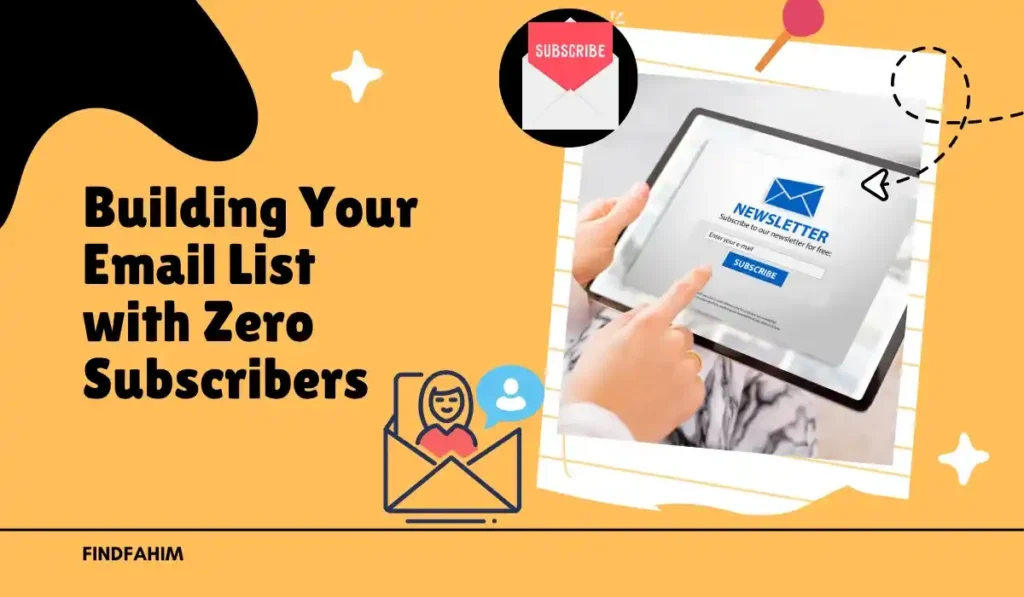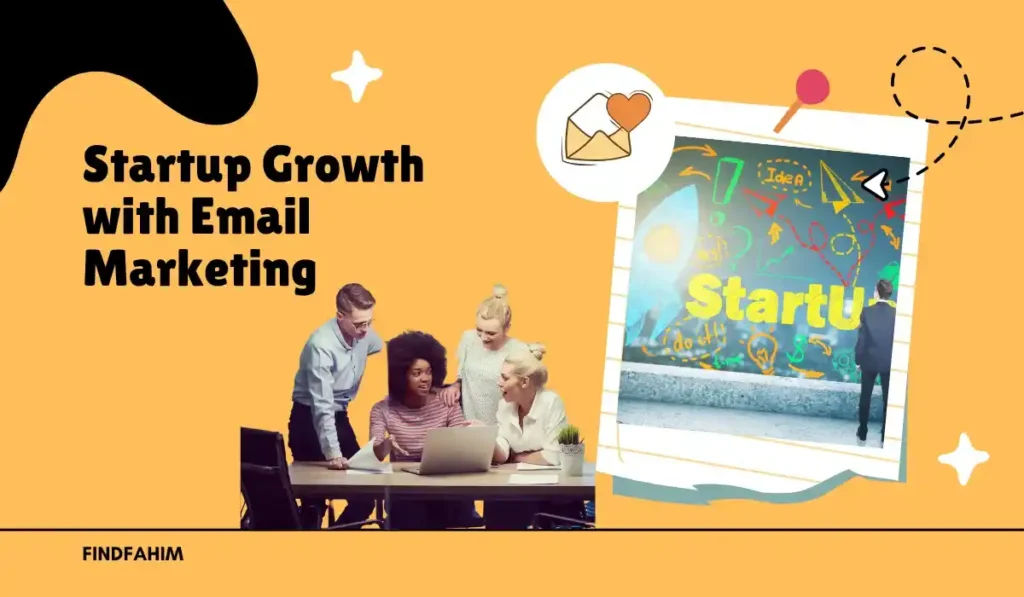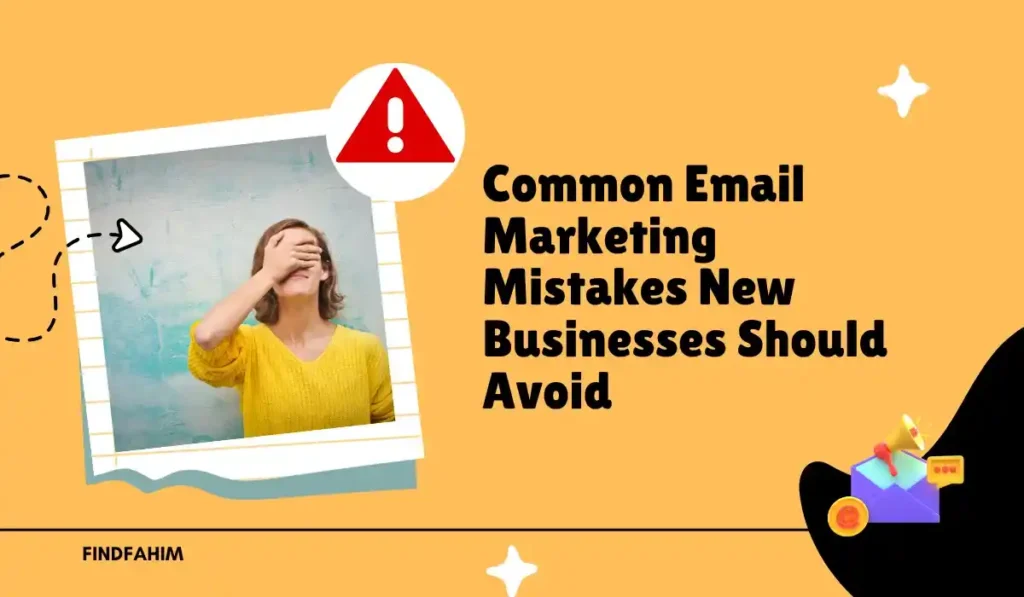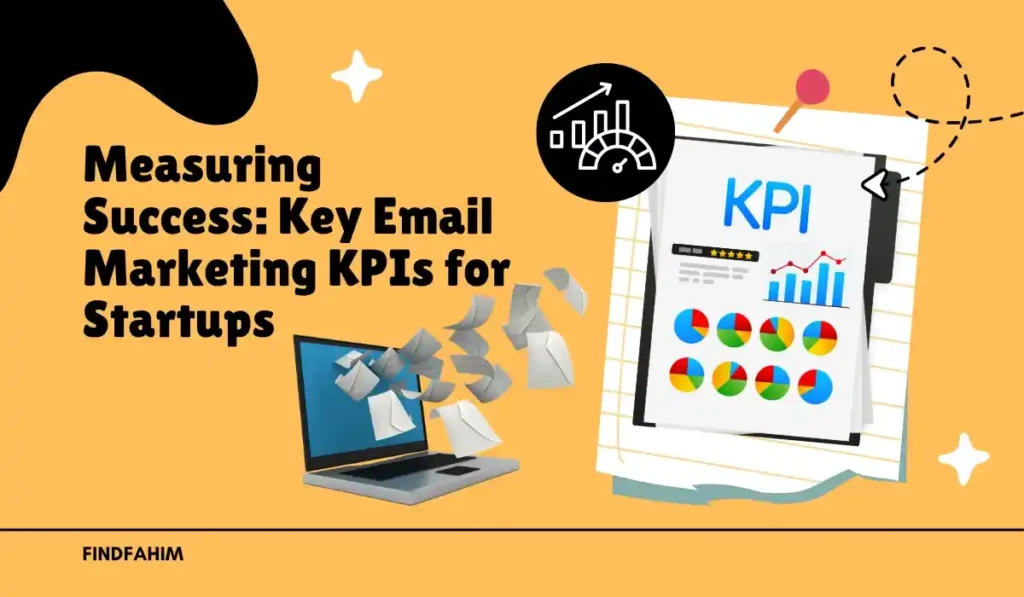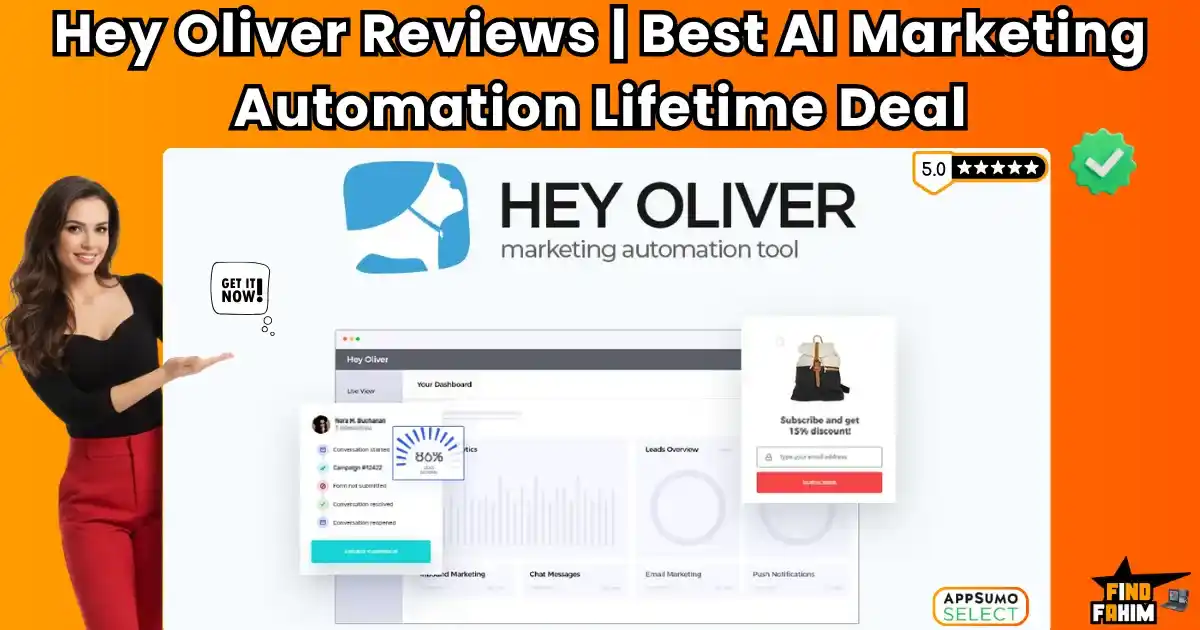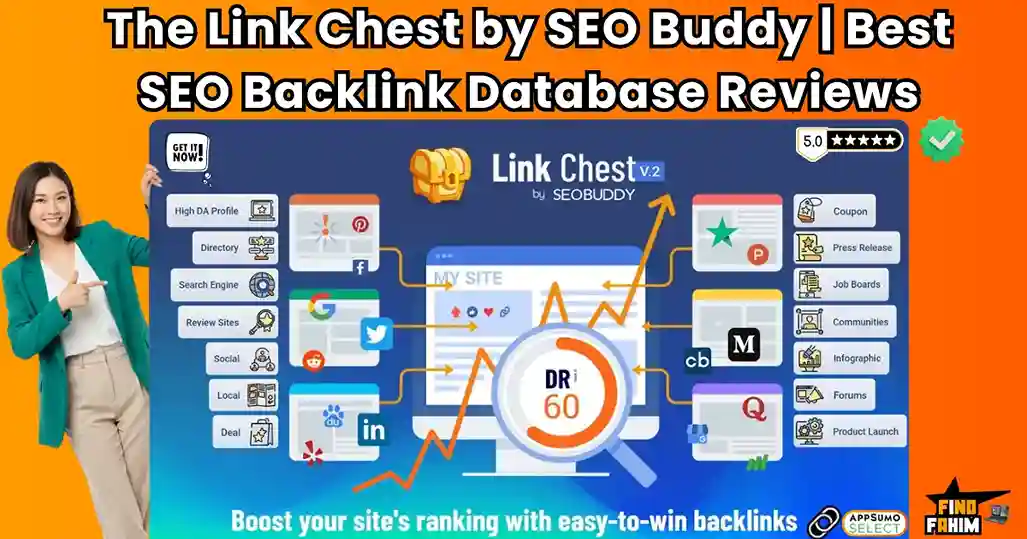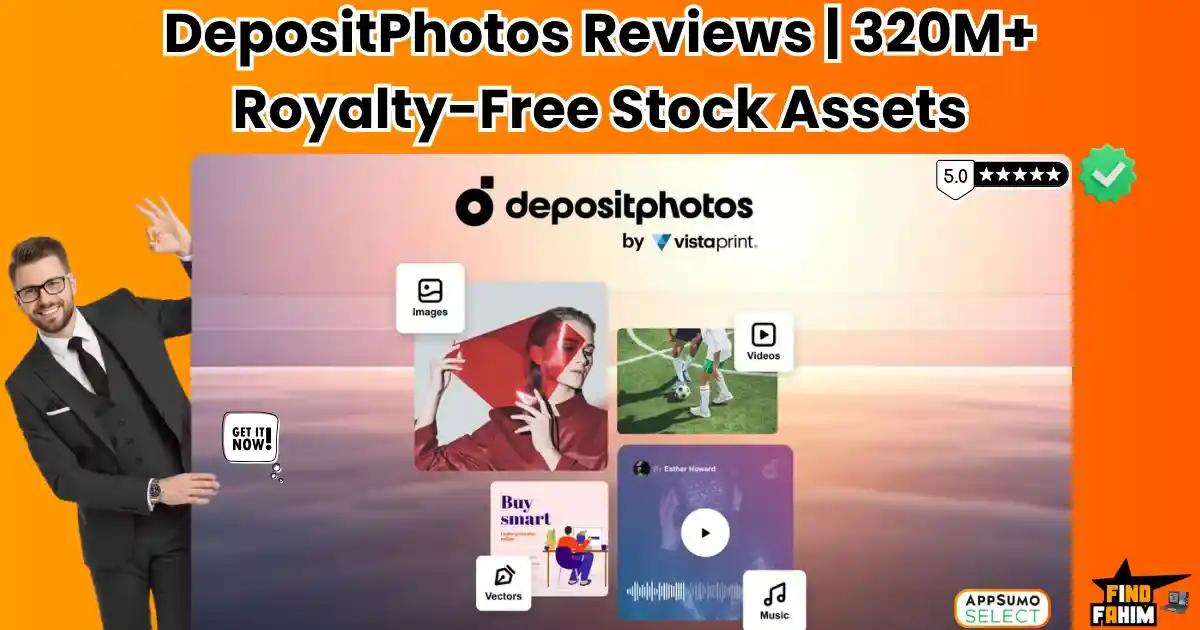Launching a new business is an exhilarating journey. Still, it’s often paved with challenges—limited budgets, the constant need for customer acquisition, and the struggle to stand out in a crowded marketplace. In this landscape, every marketing dollar and every minute spent must be accounted for. This brings us to a critical question many founders ask: How Can Email Marketing Help a New Business to grow? If you’re overlooking this powerhouse channel, you might be leaving significant growth and revenue on the table.
While new trends in social media and advertising emerge constantly, email marketing remains a steadfast, cost-effective, and incredibly powerful tool for sustainable business development, especially for startups. It offers a direct line to your audience, fosters genuine connections, and delivers an unparalleled return on investment. This comprehensive guide will explore precisely how email marketing can fuel your new business’s ascent in 2025, covering everything from building your first list and crafting compelling campaigns to leveraging automation, understanding key metrics, and choosing the right tools to get started.
Table of Contents
ToggleWhy Email Marketing is Still a Powerhouse for Growth in 2025 (Backed by Fresh Data)
In an era of ever-changing social media algorithms and escalating advertising costs, the relevance of email marketing is not just enduring—it’s intensifying. Why? Unlike your social media following, you own your email list. This grants you direct, unfiltered access to your audience’s inbox, a personal space where meaningful conversations can begin and flourish.
The latest statistics for 2024 and 2025 paint a clear picture:
- Unmatched ROI: Email marketing continues to deliver an average Return on Investment (ROI) of $36 to $42 for every $1 spent, with some reports indicating even higher returns (up to $68:1 for users of certain platforms). This makes it one of the most lucrative marketing channels available.
- High Adoption & Preference: Around 81% of Small and Medium-sized Businesses (SMBs) rely on email marketing for primary customer acquisition and retention. Furthermore, a significant majority of consumers prefer email for brand communication over other channels.
- Impressive Engagement & Conversion: Average email open rates hover around 40-42% in some studies for 2025, with click-through rates around 2-3.25%. Crucially, email marketing boasts an average conversion rate of approximately 6.5%, far surpassing many other digital channels.
- Algorithm-Proof Communication: While social platforms dictate who sees your content, your email messages land directly where intended, giving you control over your communication strategy.
In short, for new businesses seeking efficient, impactful, and sustainable growth, email marketing isn’t just an option; it’s a fundamental component of a robust marketing strategy in 2025.
10+ Ways: How Can Email Marketing Help a New Business to Grow?
Email marketing offers a multifaceted approach to nurturing and expanding your new venture. Let’s delve into the specific ways this channel can be a game-changer for your startup.
1. Build an Owned Audience & Direct Line of Communication
One of the most significant benefits of email marketing for startups is the ability to build an owned audience. When someone subscribes to your list, they’re giving you explicit permission to communicate with them directly. This is invaluable, providing a stable and reliable channel that isn’t subject to the whims of third-party platforms.
2. Achieve Exceptional ROI & Cost-Effective Marketing
As highlighted, the ROI of email marketing is exceptional. For new businesses with tight budgets, this means you can achieve significant results without breaking the bank. The relatively low cost of email service providers (ESPs) compared to the potential returns makes it an incredibly efficient use of marketing funds.
3. Drive Targeted Website Traffic & Engagement
Every email you send is an opportunity to drive subscribers back to your website. Whether it’s a new blog post, a product launch, a special offer, or company news, you can direct targeted traffic to specific pages, increasing engagement and potential conversions.
4. Boost Lead Generation for Startups & Nurture Prospects
Email marketing is a cornerstone of effective lead generation for startups. By offering valuable lead magnets (like free guides, templates, or webinars), you can attract potential customers and capture their email addresses. Subsequently, automated nurture sequences can educate these leads, build trust, and gently guide them towards a purchase decision.
5. Increase Sales and Conversions Systematically
From targeted promotional campaigns and exclusive subscriber-only discounts to abandoned cart reminders for e-commerce businesses, email marketing directly drives sales. Well-crafted emails with clear calls-to-action (CTAs) can significantly increase sales with email marketing for your new business.
6. Enhance Customer Retention & Build Loyalty
Acquiring a new customer is often more expensive than retaining an existing one. Email marketing excels at fostering customer loyalty. Regular newsletters, post-purchase follow-ups, personalized recommendations, and loyalty rewards keep your brand top-of-mind and encourage repeat business.
7. Establish Brand Authority & Build Trust
Consistently providing valuable, informative, and relevant content through your emails helps position your new business as an authority in your niche. Sharing your expertise, brand story, and customer successes builds credibility and trust with your audience over time, a crucial aspect of brand building for startups.
8. Automate Key Marketing & Sales Processes
Marketing automation for new businesses is a lifesaver. Email platforms allow you to set up automated workflows for welcoming new subscribers, nurturing leads, onboarding new customers, and even re-engaging inactive contacts. This saves precious time and ensures consistent communication.
9. Enable Powerful Personalization at Scale (with AI)
Modern email marketing, supercharged by AI in email marketing, allows for deep personalization. Beyond using a subscriber’s name, you can segment your audience based on behavior, preferences, and purchase history to deliver highly relevant content and offers. Personalized emails see significantly higher open and click-through rates.
10. Collect Valuable Customer Feedback & Insights
Want to know what your customers think or what they want next? Just ask them! Email is an excellent channel for sending out surveys, polls, or simply requesting feedback. These insights are invaluable for product development, service improvement, and overall business strategy.
11. Reduce Reliance on Expensive Advertising
By building a strong email list and engaging your audience effectively, you can reduce your dependence on costly paid advertising channels. A thriving email list becomes a sustainable source of leads and sales, offering a more predictable and cost-effective path to growth.
12. Support Your Omnichannel Marketing Strategy
Email marketing doesn’t operate in a silo. It seamlessly integrates with and supports your other marketing efforts, including content marketing, social media promotion, and even offline events, creating a cohesive brand experience for your audience.
Proven Email Marketing Strategies for New Companies in 2025
Knowing why email marketing works is one thing; knowing how to make it work for your new venture is another.
Here are proven email marketing strategies for new companies looking to make an impact in 2025:
Craft Irresistible Lead Magnets that Convert (Beyond Basic PDFs)
To build your email list, you need to offer something of genuine value in exchange for an email address. In 2025, generic PDFs often fall flat. Think bigger and more interactive:
- Interactive Quizzes: E.g., “Which [Your Product/Service Category] Style Suits You Best?”
- ROI/Cost Calculators: E.g., “Calculate How Much You Could Save with [Your Solution].”
- Free Tools & Templates: High-value, usable resources like industry-specific spreadsheet templates, design assets, or mini-software tools.
- Exclusive Access: Entry into a private community, early access to new features/products, or a free chapter of an upcoming e-book/course. The key is to deeply understand your target audience’s pain points and offer a lead magnet that provides an immediate, tangible solution or insight.
Implement Smart Segmentation from Day One
Don’t make the mistake of sending the same email to everyone. Segmentation involves dividing your email list into smaller groups based on specific criteria. This allows you to send more targeted and relevant messages, dramatically improving engagement. For startups:
- Criteria: Sign-up source (e.g., specific lead magnet), stated interests (if collected during sign-up), basic engagement (opened first email vs. didn’t), or initial purchase behavior.
- Tools: Most email marketing platforms offer tagging and custom field functionalities to facilitate segmentation. Even simple segmentation can lead to higher open rates, click-through rates, and conversions.
Develop a Value-First Content Strategy (The 80/20 Rule Reimagined)
Your subscribers’ inboxes are sacred. Respect that by focusing on providing value. A good rule of thumb is the 80/20 rule: 80% of your content should be valuable, educational, or entertaining, while only 20% should be directly promotional.
- Value Content Ideas: How-to guides, solutions to common problems, industry news and analysis, behind-the-scenes content, inspiring stories, and user-generated content showcases.
- Weaving in Promotion: Naturally integrate promotional messages where relevant, often after delivering significant value. For example, after an educational series, you can offer a product that helps implement what they’ve learned. Your content strategy for email should aim to make your subscribers look forward to hearing from you.
Set Up Foundational Automation Sequences
Automation is your best friend as a busy founder. Set up these essential sequences:
- Welcome Series (3-5 emails):
- Email 1 (Immediate): Deliver the lead magnet, a warm welcome, and a brief introduction to your brand’s mission.
- Email 2 (Day 2-3): Share your most popular resource, a key benefit, or a compelling piece of social proof (like a testimonial).
- Email 3 (Day 4-5): Educate on a core problem your brand solves, offer further value, and perhaps introduce a soft call-to-action (e.g., “Explore our solutions,” “Read our blog”).
- Lead Nurture Series (for leads not yet sales-ready): A series of emails that continue to educate, build trust, address pain points, and gently guide leads towards considering your offer.
- Abandoned Cart Series (for E-commerce): Typically, 2-3 emails are sent to customers who add items to their cart but don’t complete the purchase. These can recover a significant percentage of lost sales.
Influence AI in Your Email Marketing (Even as a Startup)
Artificial Intelligence is no longer just for large corporations. Many email marketing platforms are integrating AI features that startups can try:
- AI-Powered Copywriting: Tools to help generate engaging subject lines, email body copy, and CTAs.
- Smart Personalization: AI can analyze data to suggest dynamic content or product recommendations for individual subscribers.
- Send Time Optimization: AI algorithms can determine the optimal time to send an email to each subscriber for maximum open rates.
- Predictive Segmentation: Some tools use AI to identify segments based on predicted behavior, like likelihood to purchase or churn.
Getting Started from Scratch: Building Your Email List with Zero Subscribers
Every massive email list started with a single subscriber. If you’re at ground zero, here are your first five steps:
- Choose Your Email Marketing Platform: Select a beginner-friendly tool with a good free or affordable starting plan (see recommendations below).
- Create Your First Lead Magnet: Develop a high-value offer relevant to your ideal customer (refer to the ideas above).
- Set Up a Simple Landing Page/Opt-in Form: Most email platforms provide tools to create a dedicated page or embeddable form to capture email addresses in exchange for your lead magnet.
- Promote Your Lead Magnet: Share your landing page link across your social media profiles, in your email signature, on your (even basic) website, and tell your network about it.
- Craft Your Initial Welcome Email: Ensure this email automatically delivers the promised lead magnet and warmly welcomes new subscribers.
Best Email Marketing Tools for Startups (2025 Review)
Choosing the right email marketing tool is crucial. Here are some top recommendations for new businesses in 2025, focusing on affordability, ease of use, valuable free plans, and scalability:
| Tool | Free Plan Highlights | Pros | Cons | Best For |
| MailerLite | 1,000 subs, 12,000 emails/mo, automation, landing pages | Very easy to use, great value, good support | Fewer advanced features on the free plan (e.g., some templates) | Beginners, bloggers, and startups wanting simplicity & value |
| Brevo (Sendinblue) | Unlimited contacts, 300 emails/day, basic automation, CRM | All-in-one (Email, SMS, Chat), good for transactional emails | Can get complex, daily sending limit on the free plan | Businesses needing an integrated marketing hub |
| ConvertKit | Up to 1,000 subs, unlimited landing pages/forms, broadcasts | Excellent for creators, strong segmentation & automation (paid) | Simpler email editor by design, paid features are key | Content creators, bloggers, and course sellers |
| SendFox (Highly Recommended) | Known for AppSumo Lifetime Deal (often ~$49 for 5k subs) | Extremely affordable (LTD), simple for newsletters & autoresponders | Basic feature set compared to subscription models | Budget-conscious creators, simple newsletter needs |
| Mailchimp | 500 contacts, 1,000 emails/mo, basic templates | User-friendly interface, good for e-commerce integrations | The free plan is very limited, and can get expensive quickly | Those familiar with it, basic e-commerce needs |
| HubSpot | Free CRM with email tools (2,000 emails/mo, 1k contacts) | Powerful integrated CRM, good for sales alignment | Steeper learning curve, marketing hub gets pricey | Startups wanting a full, free CRM solution |
Email Verification Tools:
Don’t forget list hygiene! Regularly cleaning your email list with a verification tool improves deliverability and protects your sender reputation.
Reoon Email Verifier (Best): High accuracy, pay-as-you-go credits with lifetime validity, and often has lifetime deals. Others like ZeroBounce, NeverBounce, and Bouncer are also popular.
Real-World Inspiration: New Businesses Achieving Startup Growth with Email Marketing
Theory is great, but seeing how other new and growing businesses use email can provide powerful inspiration.
Here are a few examples showcasing effective startup growth with email marketing:
Instantly AI (SaaS)
This cold email SaaS platform bootstrapped to $2.4 million ARR in just nine months. Their strategy included an AppSumo launch, leveraging their existing agency clients as initial users, sharing success stories, building a vibrant Facebook community (which they promoted via email), and, crucially, using their email outreach tool for promotion.
Flodesk (SaaS – Email Marketing Tool)
Reportedly grew to $1 million ARR in approximately four months. A key growth driver was a viral footer automatically added to emails sent via their platform, linking to their attractive affiliate program. This created a compounding growth loop powered by the email channel itself.
Sinem Günel (Content Creator via ConvertKit)
This creator grew her email list from 8,000 to over 10,000 subscribers in three months by utilizing ConvertKit’s Creator Network and recommendation features. Subsequently, 10% of her course launch sales ($6,000) came directly from these newly acquired subscribers.
To’ak Chocolate (E-commerce via Omnisend)
This luxury chocolate brand attributes almost 40% of its email-generated revenue to automated campaigns. Their welcome series, which focuses on storytelling and brand education, is particularly effective in converting new subscribers.
Strawberry Hill Baking Company (E-commerce via Sendlane)
This traditional bakery quickly grew its SMS list (often cultivated through email opt-ins for integrated campaigns) to over 2,500 subscribers, driving more than $42,000 in revenue during a key holiday season through targeted email and SMS promotions.
Airbnb (Early Growth – Platform)
In its nascent stages, Airbnb famously used highly personalized and educational emails to target property listers on Craigslist. By understanding their concerns and demonstrating value, they successfully onboarded thousands of hosts, a strategy instrumental to their early expansion.
These examples highlight that whether you’re a SaaS company, a content creator, or an e-commerce brand, tailored email strategies can be a potent engine for growth.
Common Email Marketing Mistakes New Businesses Must Avoid
While email marketing is powerful, certain pitfalls can derail your efforts. Steer clear of these common mistakes:
- Buying Email Lists: This is often illegal, damages your sender reputation, leads to low engagement, and alienates potential customers. Always build your list organically.
- Not sending a Welcome Email/Series: This is a missed opportunity to engage new subscribers when they are most receptive.
- Inconsistent Sending or Over-Emailing: Find a balance. Ghosting your list or bombarding them daily can both lead to unsubscribes.
- Ignoring Mobile Optimization: With over 50-60% of emails opened on mobile devices, non-responsive emails are a major turn-off.
- Poor List Hygiene: Failing to regularly clean your list of inactive or invalid emails hurts deliverability.
- Generic, Non-Segmented Campaigns: Sending the same message to everyone reduces relevance and engagement.
- Weak Subject Lines & Lack of Clear CTAs: Your subject line is your first impression; your CTA tells subscribers what to do next. Make them compelling.
- Not A/B Testing: Without testing elements like subject lines, CTAs, or content, you’re guessing what works best.
- Ignoring Analytics: Failing to track key metrics means you can’t identify areas for improvement.
- Non-Compliance with Email Laws: Disregarding regulations like GDPR, CCPA, and CAN-SPAM can lead to hefty fines and a damaged reputation. Ensure your domain is authenticated (SPF, DKIM, DMARC) to comply with new sender rules from Google and Yahoo.
Measuring Success: Key Email Marketing KPIs for Startups
You can’t improve what you don’t measure. Tracking these email analytics and KPIs is essential for understanding performance and optimizing your email campaign best practices:
- Open Rate: The percentage of recipients who opened your email. (Aim for >30%; 2025 averages are around 40-42% but vary by industry).
- Click-Through Rate (CTR): The percentage of recipients who clicked on one or more links in your email. (Aim for >2-3%; 2025 averages are around 2-3.25%).
- Conversion Rate: The percentage of recipients who completed a desired action (e.g., made a purchase, signed up for a webinar) after clicking a link 2 This is highly variable but crucial.
- List Growth Rate: The rate at which your email list is growing.
- Unsubscribe Rate: The percentage of recipients who unsubscribed.3 (Keep below 0.5%; 2025 averages are around 0.1-0.2%).
- Bounce Rate: The percentage of emails that couldn’t be delivered. (Keep hard bounces near zero and overall below 2%).
- Return on Investment (ROI): Revenue generated from email campaigns divided by the cost of those campaigns. (The ultimate measure of profitability).
While specific “startup” benchmarks are scarce, these general 2025 figures provide excellent targets. Regularly review your ESP’s analytics dashboard and adapt your strategies accordingly.
Email Marketing vs Social Media vs Paid Ads: Where Should New Businesses Focus?
New businesses often grapple with where to allocate limited marketing resources. Here’s a quick comparison:
| Feature | Email Marketing | Social Media Marketing | Paid Advertising (PPC/Social Ads) |
| Ownership | ✅ You own your list (direct asset) | ❌ The platform owns an audience, algorithm-dependent | ❌ Renting attention |
| ROI | ✅ Highest potential, very cost-effective | Variable, often lower direct ROI, may need ads | Can be high, but costly upfront |
| Directness | ✅ Direct to inbox, personal | Filtered by algorithms, public | Targeted, but can be intrusive |
| Longevity | ✅ Messages persist, and content can be evergreen | Ephemeral posts, short lifespan | Campaign-dependent |
| Cost | Low ongoing cost (ESP fees) | Can be “free” organically, but time-intensive; ads add cost | High, requires continuous budget |
| Personalization | ✅ Deep segmentation & personalization are possible | Limited personalization options | Good targeting, less personal |
Note: While social media is valuable for brand awareness and community building, and paid ads can provide quick visibility, email marketing offers unparalleled long-term value, control, and ROI for new businesses. It should be a foundational element of your strategy, working in tandem with other channels.
Final Thoughts: Start Early, Grow Smarter with Email Marketing
If you’re launching a new business, the answer to “How Can Email Marketing Help a New Business to Grow?” is: profoundly, and in more ways than you might imagine. It’s not just another marketing task to check off; it’s your owned channel for building relationships, driving consistent sales, and fostering sustainable growth.
The power of email marketing lies in its directness, its cost-effectiveness, and its ability to deliver personalized experiences at scale. It’s never too early to start building your list. The sooner you begin, the quicker you’ll cultivate a valuable asset that can fuel your business for years to come.
Your first steps can be simple:
- Pick a beginner-friendly email marketing tool.
- Create a valuable freebie (a checklist, a short guide, a template) that solves a real problem for your ideal customer.
- Set up a basic landing page and send your first welcome email this week.
You don’t need a massive audience or a complex strategy to see initial results. Even with a small, targeted list of 50-100 subscribers, you can make your first sales, gather crucial feedback, and begin building lasting customer relationships.
Start early. Start smart. Let your inbox become your new business’s most valuable growth engine.
Frequently Asked Questions (FAQs)
A: For new businesses, consistency is key. Start with once a week or bi-weekly. Focus on providing value. Monitor your engagement and adjust. Don’t overwhelm, but don’t let your list go cold.
A: Your first campaign should be a Welcome Series. Introduce your brand, tell your story, explain the value subscribers can expect, and deliver any promised lead magnet. Be authentic and aim to connect, not just sell.
A: Not necessarily. While a website is beneficial long-term, you can start collecting email addresses using landing pages provided by most email marketing platforms.
A: Absolutely! Local businesses can use email for newsletters featuring local events or tips, special offers for local subscribers, appointment reminders, and loyalty programs.
A: Tools like MailerLite, Brevo, and SendFox (especially with its lifetime deal) are often recommended for beginners due to their ease of use, good free/affordable plans, and core features.
A: It varies based on list quality, offer attractiveness, industry, and consistency. However, some businesses start seeing a positive impact within a few months, especially if they focus on list building and targeted campaigns.
A: Offer a high-value lead magnet, promote it consistently on your website (if you have one) and social media, use opt-in forms strategically, and consider partnerships or collaborations.
A: Aim for as much relevant personalization as feasible. At a minimum, use the subscriber's first name. Segmenting your list and tailoring content to those segments is a powerful form of personalization that significantly boosts engagement.
A: Generally, concise and clear emails perform best, especially in welcome sequences (100-300 words). However, value-packed newsletters or educational emails can be longer if the content is engaging and well-structured.
A: More than ever. With rising ad costs and the fight for attention on social media, email marketing provides a direct, cost-effective, and high-ROI channel for new businesses to connect with their audience, build relationships, and drive sustainable growth. Q: How often should a new business send emails?
Q: What should I write in my first email campaign for a new business?
Q: Do I need a website to start email marketing?
Q: Can email marketing work for local businesses?
Q: What is the best email marketing tool for beginners?
Q: How long does it take to see ROI from email marketing for a new business?
Q: How can I grow my email list fast as a new business?
Q: Should I personalize every email I send?
Q: What’s the ideal email length for new subscribers?
Q: Is email marketing still effective in 2025 for new businesses?
Hi, I’m Fahim — a SaaS tools reviewer and digital marketing expert with hands-on experience helping businesses grow using the right software. I research, test, and personally use a wide range of AI, business, productivity, marketing, and email tools for my agency, clients, and projects. I create honest, in-depth reviews and guides to help entrepreneurs, freelancers, startups, and digital agencies choose the best tools to save time, boost results, and scale smarter. If I recommend it, I’ve used it — and I only share what truly works.

